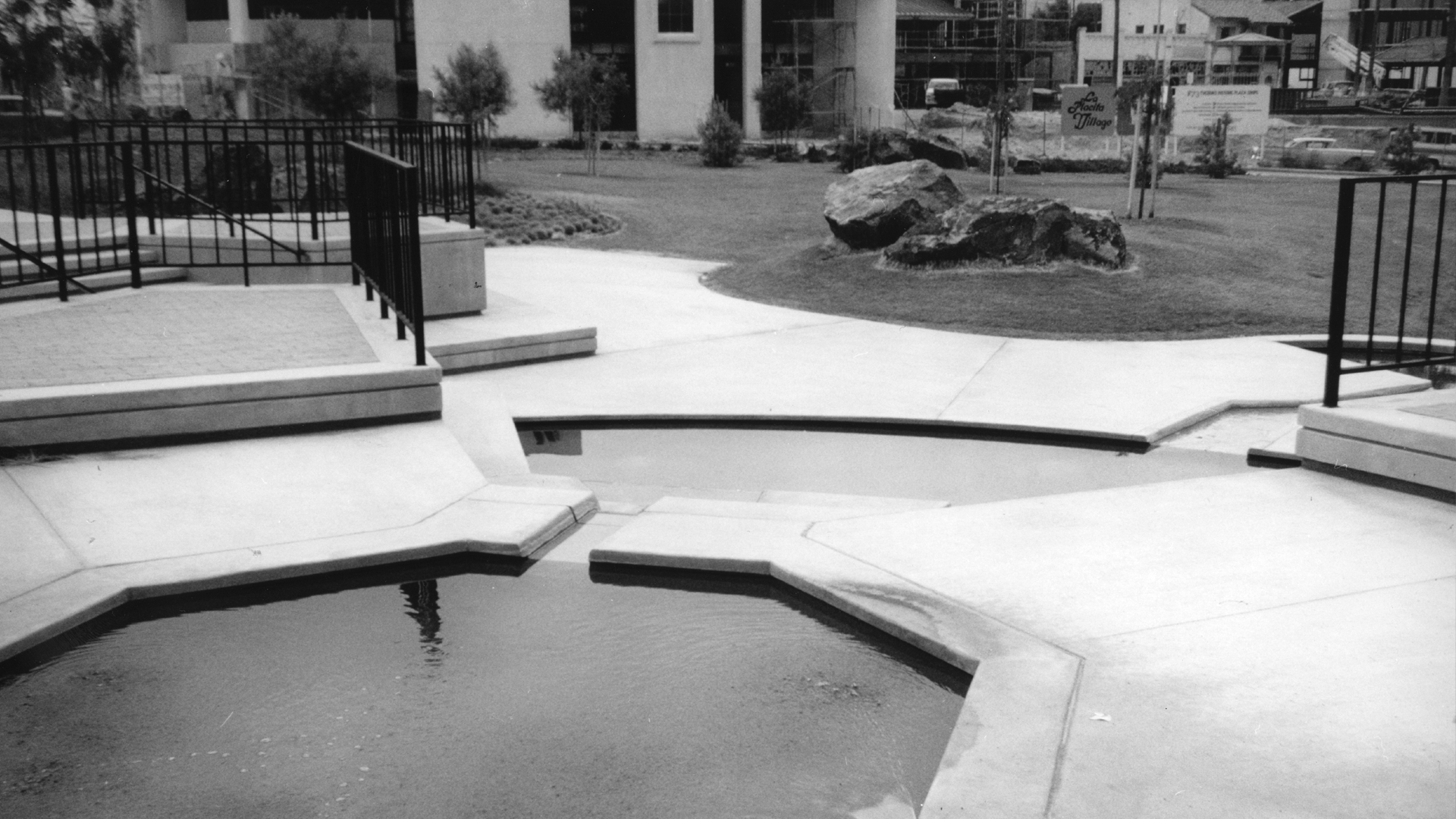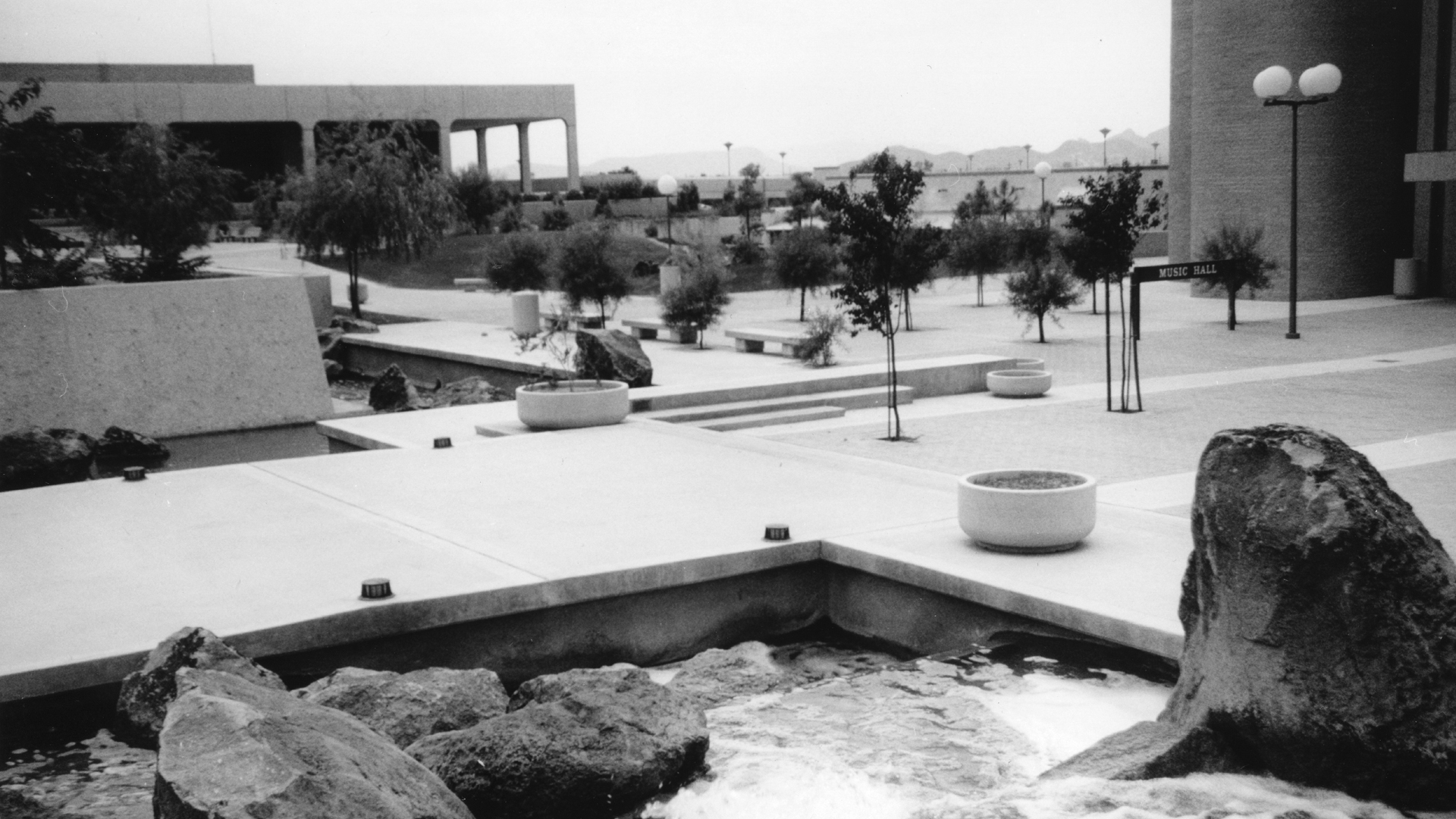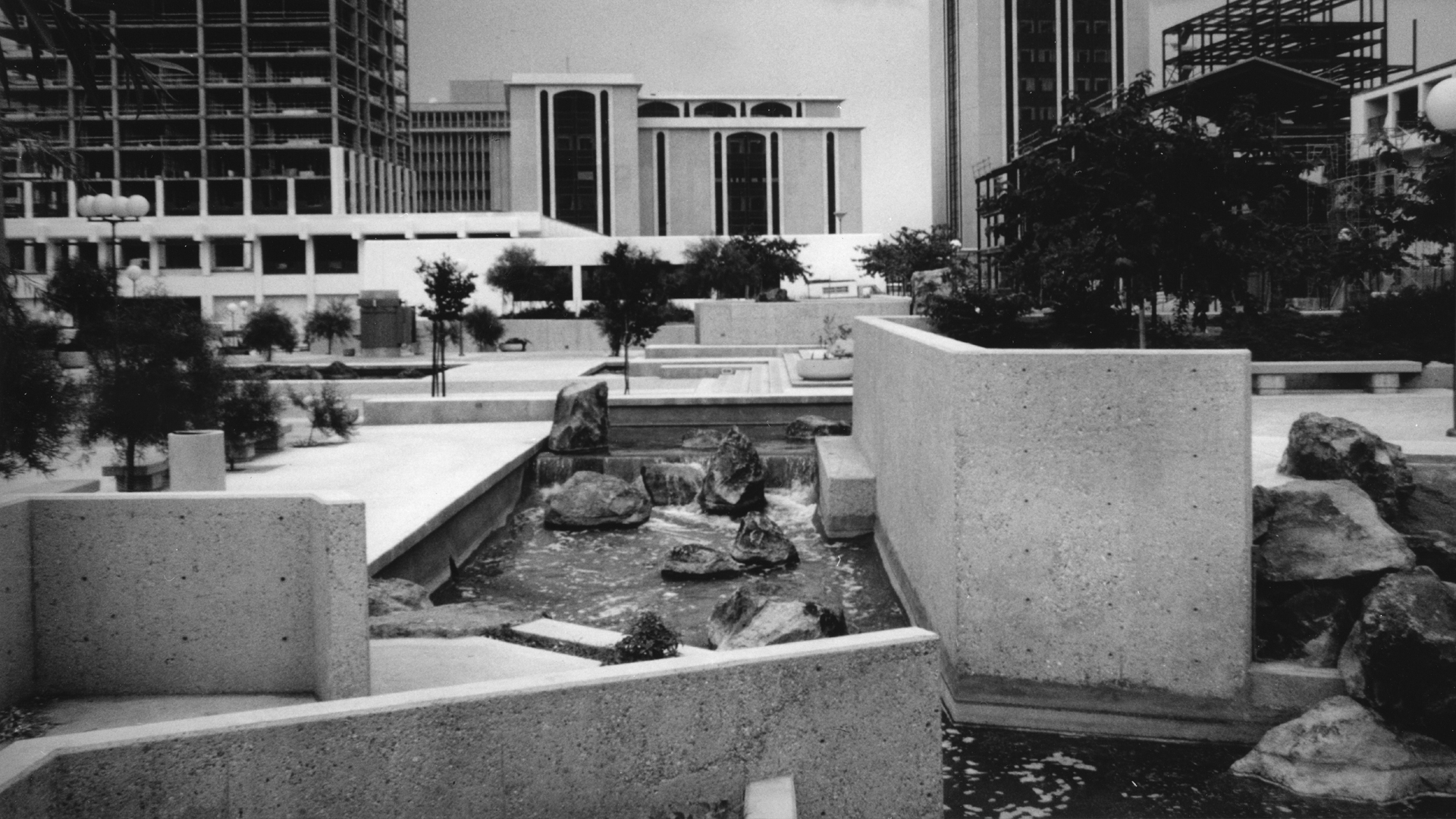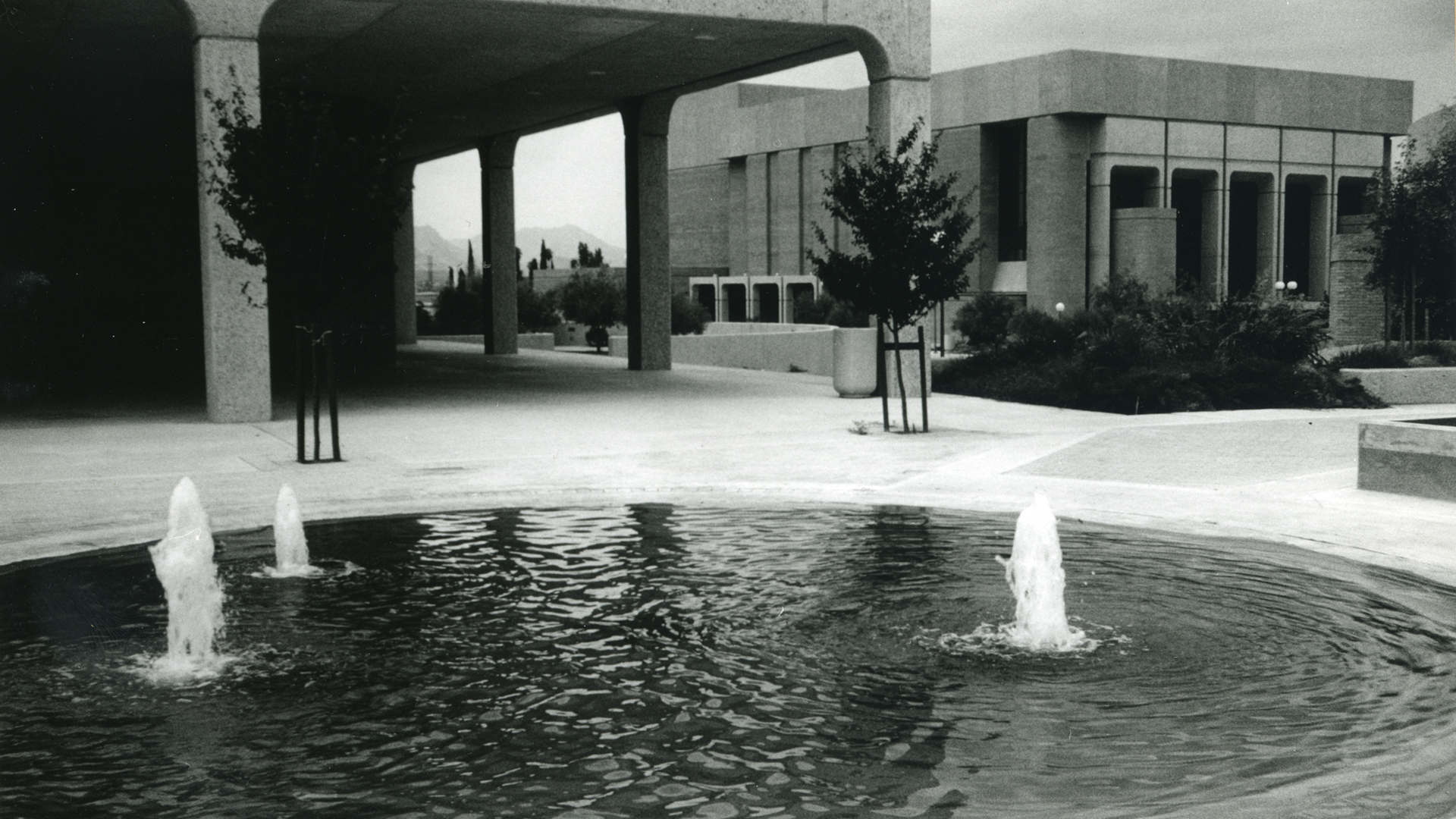The Historic Landscape was listed on the National Register of Historic Places at the National Level of Significance on September 8, 2015.
The Tucson Community Center Landscape was designed by Garrett Eckbo, one of the twentieth century’s foremost American landscape architects. Created at the height of his career, it was completed in two stages in 1971 and 1973, under the direction of local architects and planners. This landscape is the only Eckbo-designed civic space in Arizona.
Eckbo was known for his interest in designing “people places” and for introducing aridland and native plants into his designs. He understood the importance of water to those who dwell in the desert, and he recognized the unique identity of Tucson as a city of rich cultural and ecological heritage.
-




At approximately 5.75 acres, the Tucson Community Center Landscape represents one of the largest areas of open space in downtown Tucson. Complementing El Presidio Park and Jácome Plaza, it provides an open core for large festivals and events. Its position, surrounded by cultural venues – the Arena, the Leo Rich Theater and the Music Hall – with the historic Rialto Theatre nearby, begs for a creative program of related recreational opportunities.
During the 1980s the optimism that accompanied the development of a community center for Tucson began to fade, and little by little the Tucson Community Center became known only as the Tucson Convention Center, obscuring its intended role as a cultural center for the citizens of Tucson.
The Modernist movement of the mid 20th century was a time in which “traditional” forms of expression were rejected and replaced with new ideas and values. Although appreciation for Modernist architecture is becoming commonplace, the same is not true of Modernist landscapes. Instead, they are misunderstood in the eyes of the public and as a result are threatened throughout the country.
In 2010 the Eckbo TCC Landscape was labled “At Risk” by The Cultural Landscape Foundation: Eckbo-Designed Tucson Convention Center Landscape
On January 6, 2012, Fred Gray, Director of the City of Tucson Department of Parks and Recreation, submitted a Deaccession Request for the Tucson Community Center Landscape to the Tucson Pima Arts Council (TPAC) in accordance with the City’s Administrative Directive on Public Art. TPAC is the designated local arts agency for the City of Tucson and Pima County. Part of TPAC’s role is to ensure the ongoing presence and integrity of public art. In the request, Gray cited concerns about the feasibility of repairs, the need for costly maintenance, and issues of public safety.
The TPAC deaccession process was developed to provide guidance and recommendations for the long-term management of public art. The Tucson Community Center Landscape is not a single artwork or installation, but rather a complex grouping of design features and relationships, some of which are contributing elements to the historic landscape and some of which are individual art works unrelated to the character of the site.
The Deaccession Request initiated a formal review process, conducted by TPAC on behalf of the City of Tucson. A Subcommittee of the Public Art and Community Design Committee composed of Corky Poster (Principal, Poster Frost Mirto and Tucson Pima Arts Council Board of Directors), Darlene Showalter (Landscape Architect, McGann & Associates & Public Art and Community Design Committee), Demion Clinco (President, Tucson Historic Preservation Foundation and Arizona State Advisor, National Trust For Historic Preservation), Dorothée Harmon (Manager, Pima Community Public Art and Community Design Committee), Emily Yetman (Landscape Architect, Living Streets Alliance), Herb Stratford (President, Historic Theater Consultants and preservation specialist), Randy Hansen (Tucson Pima Arts Council Board of Directors and Public Art & Community Design Committee), and Peg Weber (District Administrator, City of Tucson Parks and Recreation – a non-voting member).
To inform the process the Tucson Historic Preservation Foundation oversaw the preparation of a Historic Landscape Conservation Master Plan with principle author Helen Erickson.
On July 12, 2012, the Tucson-Pima County Historical Commission Plans Review Subcommittee reviewed and unanimously approved this Conservation Plan, recommending that it be submitted to Mayor and Council for adoption.
On July 30, 2012, the Plan was reviewed and approved by the Tucson Pima Arts Council Public Art and Community Design Committee Deaccession Subcommittee. The subcommittee unanimously voted to recommend against deaccession of the Landscape and recommended the plan be forwarded to the City Manager for adoption.
In October 2012 the landscape was nominated to the National Register of Historic Places by the Tucson Historic Preservation Foundation; the nomination prepared by Helen Erickson.
The Historic Landscape was listed on the National Register of Historic Places at the National Level of Significance on September 8, 2015.
The Foundation supported the inclusion of the historic Tucson Community/Convention Center Landscape in the proposed 2015 Pima County Bond Election and continues to advocate for investment into this nationally significant modernist landscape. More information on advocacy–and ways to encourage others to get involved–can be found online at TCC TODAY. The goal of TCC Today is to preserve and renovate this valuable cultural heritage site, including the adjacent Music Hall, which provides the stage for so many of Southeastern Arizona’s diverse musical ensembles. Over the last ten years, Helen Erickson, Karla Van Drunen Littooy, Elaine Becherer and Demion Clinco have led the sustained effort for preservation of this Nationally recognized asset.
HELP SAVE THE TCC LANDSCAPE
DONATE